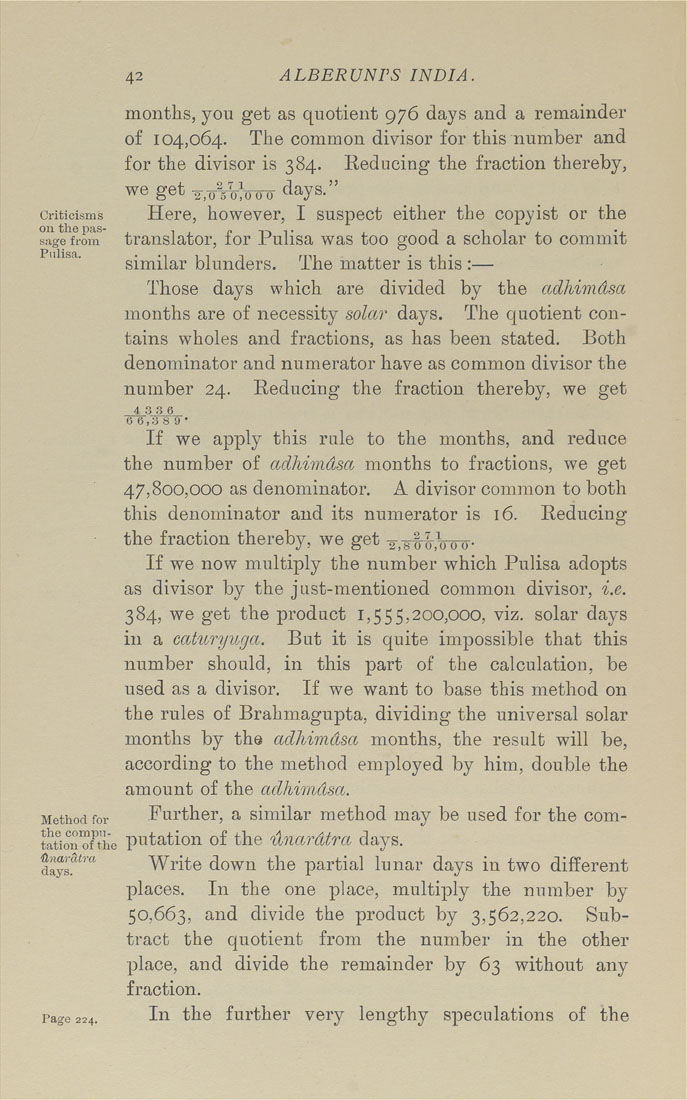42
ALBERUNTS INDIA.
Criticisms
on the pas¬
sage from
months, you get as quotient 976 days and a remainder
of 104,064. The common divisor for this number and
for the divisor is 384. Eeducing the fraction thereby,
we get ■^,jyW;-uiTo days."
Here, however, I suspect either the copyist or the
translator, for Pulisa was too good a scholar to commit
similar blunders. The matter is this :—
Those days which are divided by the ctdhimdsa
months are of necessity solctr days. The quotient con¬
tains wholes and fractions, as has been stated. Both
denominator and numerator have as common divisor the
number 24. Eeducing the fraction thereby, we get
4.3 3 6
6 6 , y 8 9 ■
If
we apply this rule to the months, and reduce
the number of adhimdsa months to fractions, we get
47,800,000 as denominator. A divisor common to both
this denominator and its numerator is 16. Eeducing
the fraction thereby, we get 2-,8"w,Wo-
If we now multiply the number which Pulisa adopts
as divisor by the just-mentioned common divisor, i.e.
384, we get the product 1,555,200,000, viz. solar days
in a caturyitgct. But it is quite impossible that this
number should, in this part of the calculation, be
used as a divisor. If we want to base this method on
the rules of Brahmagupta, dividing the universal solar
months by the ctdhimdsct months, the result will be,
according to the method employed by him, double the
amount of the adhimdsct.
Method for Further, a similar method may be used for the com-
tation'^f^the putation of the iXnctrdtrct days.
Wafra Write down the partial lunar days in two different
places. In the one place, multiply the number by
50,663, and divide the product by 3,562,220. Sub¬
tract the quotient from the number in the other
place, and divide the remainder by 63 without any
fraction.
Page 224. In the further very lengthy speculations of the
I
|








